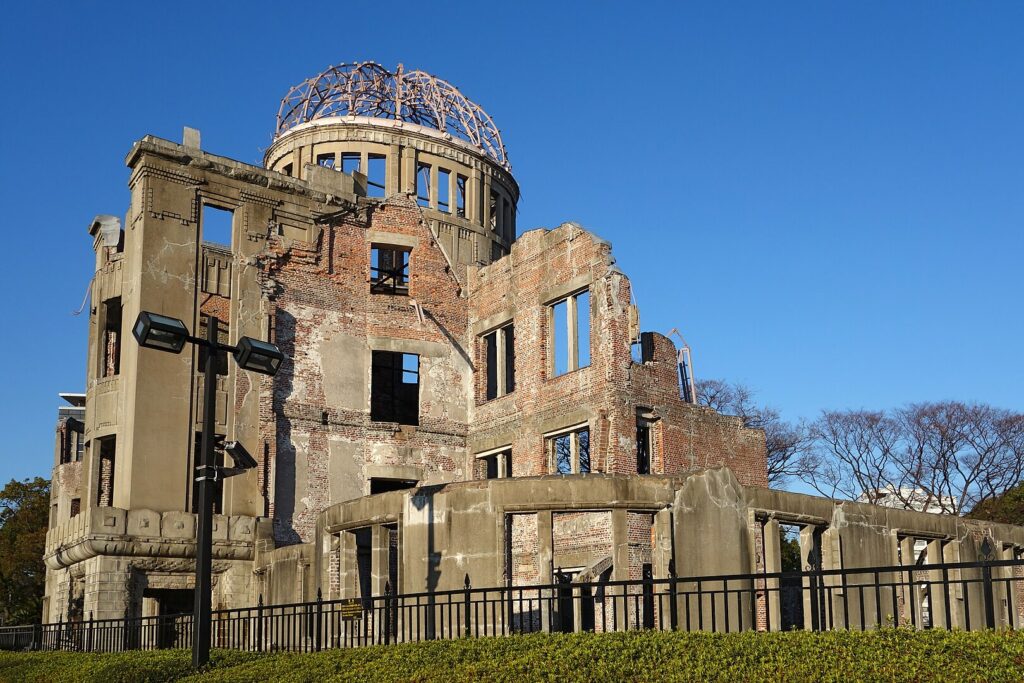Jan Morris visited Hiroshima in 1959, fourteen years after its devastation by the United States’ atomic bomb. “The city has long been rebuilt, and a new population has flooded in to replace the victims of the holocaust,” she wrote, “but for all the bright new buildings and the broad boulevards, no Pompeii is more surely frozen in its attitude of disaster, and no Mont Pelée more permanently scarred.” Despite the robust urban form and activity around her, she felt “for all the world as though the tall new buildings are not there at all, and the islands of the Ota delta are still blackened and smoking. Assured indeed must be the visitor who has not, just for a fleeting foolish moment, wondered if the stones of Hiroshima were still radioactive, or eyed the running water thoughtfully.”
Today, the very name of Hiroshima still evokes one thing and one thing only, at least to most foreigners. But if those foreigners actually make the trip to that once-destroyed city, it will probably strike them as even more incongruously alive than it did Morris those six decades ago.
Some would imagine that, given that the dropping of the bomb known as “Little Boy” remains just within living memory — its 78th anniversary passed just last Sunday — Hiroshima would be an abandoned nuclear wasteland. Here to explain why it flourishes instead is Youtuber Kyle Hill, whose new video above explains the difference between the long-term effects of nuclear devastation on Hiroshima and those on a place like the region of the Chernobyl nuclear power plant.
“For all the destruction it caused, the Little Boy bomb was terribly inefficient,” Hill says. “Of the bomb’s 64 kilograms of uranium, less than one kilogram underwent fission. This means that “every joule of energy that devastated Hiroshima, a fireball so hot it etched ‘negatives’ of people into concrete, a blast wave so intense, it shattered windows 200 kilometers away, came from less than a gram of matter converted directly into energy.” To the much more powerful nuclear weapons developed since there can be no comparison, even considering that Little Boy (like “Fat Man,” which hit Nagasaki) was detonated high in the air, not on the ground, thus causing relatively little lasting contamination. As a result, there’s no need to feel radiation-related hesitation about visiting Hiroshima. If you go, by all means visit the Hiroshima Peace Memorial Museum, but don’t forget to enjoy an okonomiyaki or two as well.
Related Content:
Watch Chilling Footage of the Hiroshima & Nagasaki Bombings in Restored Color
The “Shadow” of a Hiroshima Victim, Etched into Stone, Is All That Remains After 1945 Atomic Blast
A Look Into the Wondrous Life & Expansive Work of the Late Jan Morris, Who Wrote the Entire World
Based in Seoul, Colin Marshall writes and broadcasts on cities, language, and culture. His projects include the Substack newsletter Books on Cities, the book The Stateless City: a Walk through 21st-Century Los Angeles and the video series The City in Cinema. Follow him on Twitter at @colinmarshall or on Facebook.
